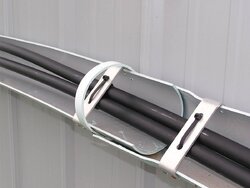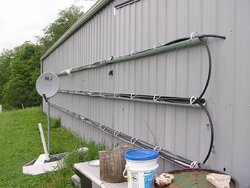I have had this built for a few years now. I first used it to help heat my pool, but now I'd like to pump the water into my existing 500 gal storage tanks. Im looking for ideas on a dc run pump so that I can hook it up to a matched solar panel. My thinking is that when the solar panel has power to feed the pump, the water in the pipes also must have some heat.
There will be virtually no head on the pump since my storage tanks stand virtical. All of the rest of the plumbing is in place because I use the tanks along with my gasifier wood stove to heat my home. I simply need to connect the solar system, and then I can use it for our showers and such.
Pump, panel, thoughts-where to buy. Thanks!
There will be virtually no head on the pump since my storage tanks stand virtical. All of the rest of the plumbing is in place because I use the tanks along with my gasifier wood stove to heat my home. I simply need to connect the solar system, and then I can use it for our showers and such.
Pump, panel, thoughts-where to buy. Thanks!



